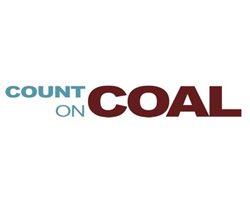A New Era for American Energy

March 29, 2017 - “The War on Coal is over – and a new era of American energy has begun.” So tweeted our vice president this weekend, foreshadowing the events that occurred today at EPA headquarters.
It was a stirring sight: 30 coal miners from the Brush Valley Mine in Pennsylvania alongside President Trump, EPA Administrator Pruitt and Energy Secretary Perry, for the signing of an Executive Order that marks the beginning of the repeal of the Clean Power Plan and lifts the federal coal moratorium.
This order marks a new era for American energy: one of true and fair competition, where an “all of the above” energy policy that benefits all Americans is welcome once again.
In recent years, supporters of former President Obama’s regulatory program claimed it was natural gas, not regulation, that was causing the decline of coal. President Trump’s actions today will test that hypothesis. If coal’s critics are right, little will change in coal’s overall trajectory and the President will have helped remove the government’s heavy hand from the energy market.
But if they’re wrong, the president has helped safeguard thousands of good jobs without inflicting any harm on the environment. What is often lost in the debate is that the Clean Power Plan would have caused no meaningful reductions in global greenhouse gas emissions. Even former Obama-Administrator Gina McCarthy has admitted it was largely symbolic. But it would have cost up to 125,000 jobs here in the U.S. and caused double-digit increases in wholesale electricity prices for 40 states, even though U.S. CO2 emissions today are already below EPA’s forecast. A heavy cost for a “symbolic” benefit.
The environmental rationale for the federal coal moratorium was similarly false. Coal from the Powder River Basin accounts for a mere 4.7 percent of worldwide production, so its impact on global climate change is trivial. But the moratorium would have cast a cloud over coal production that accounts for most of the nation’s coal supply and the 25,000 jobs the program supports in the supply chain.


